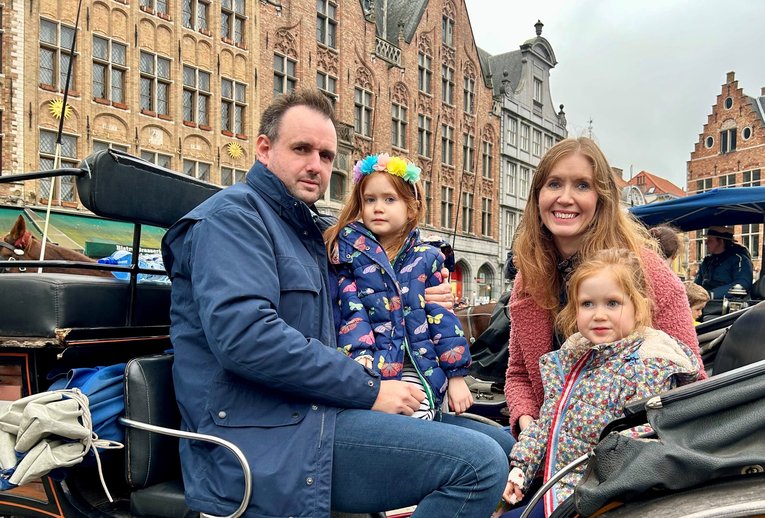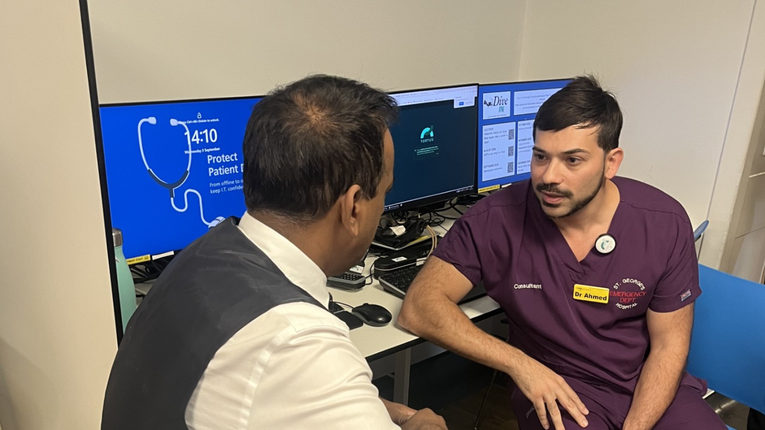
https://www.gosh.nhs.uk/news/ancient-gene-mutation-found-cause-rare-hereditary-condition-gosh-patient/
Ancient gene mutation found as the cause of rare hereditary condition for GOSH patient
18 Jan 2021, 5:11 p.m.
UK scientists have found that a 7,000-year-old genetic mutation is responsible for a rare form of hereditary motor neuropathy (HMN).
Published in the journal Brain, geneticists and clinicians from the University of Oxford and University College London who led the international study said they had found that the novel disease gene VWA1 was linked to the progressive condition HMN.
HMN affects the nerves leading from the spinal cord to the muscles in the limbs, and causes muscle weakness and affects movement in the feet and legs. Onset of HMN often occurs in teenagers, although it can happen later in life.
Ten participants from the 100,000 Genomes Project were identified as having VWA1 gene mutations – an unusually high number for a newly-described genetic condition. The 100,000 Genomes Project, was established to sequence 100,000 genomes from NHS patients affected by a rare disease or cancer, and has now paved the way for the UK’s new Genomic Medicine Service. Great Ormond Street Hospital (GOSH) was named as a key centre co-ordinating the recruitment of patients to the project in 2014. This means that many of our patients took part in the project and had their whole DNA analysed or ‘sequenced’.

One of the patients identified with the condition is seven-year-old Lucrezia, from Birmingham, who has been treated at GOSH since 2018. She finds it hard to climb stairs and to run. Because doctors were unable to diagnose her condition, they recommended she join the 100,000 Genomes Project. Lucrezia’s family were delighted to finally get answers when the mutation was found in March 2020.
“In the past nobody could tell us if she was going to progress. We wondered what we would say to her when she grows up and asks about her disease," her mother, Francesca, said. “You see how much she likes going around on the scooter and coming for walks with us, and you wonder whether she would be able to do this in the future.
“For us, when we saw the results of the genetics, it gave us a very positive message. Very few of these other cases progressed toward significant disability. I want her to maintain capabilities as much as possible. We’re definitely thinking in a more positive manner.”
Francesca says the research has had an important and immediate impact on their quality of life:
“The project meant everything to our family. The mutation was so rare that we wouldn’t have been able to discover it without the research. So it meant giving us a shot of a diagnosis that otherwise we wouldn’t have known. We’re extremely grateful that we were considered as a family for this initiative. For us it’s extremely valuable.”
As for the future, knowing that Lucrezia’s condition is caused by a recessive mutation inherited from them, her parents would now like to know about the risk of Lucrezia passing the mutation on to her own children.
It is believed that one in 500 people of European origin carry the primary gene mutation, and around one in a million are affected by the condition, which translates to more than 60 people in the UK. It is estimated that the genetic variants in VWA1 may be responsible for up to 1% of the unexplained HMN cases in Europeans.
A ‘common’ rare disease
Lead author on the paper, Dr Alistair Pagnamenta of the University of Oxford’s Wellcome Centre for Human Genetics (WCHG), said: “It was quite surprising that in the 100,000 Genomes Project database, we found ten different families all with this new genetic disease. For a rare disease, this means it is actually relatively common.”
“This variant is picked up a lot more efficiently by whole genome sequencing, which demonstrates the value and the rationale behind the 100,000 Genomes Project.”
Prof Henry Houlden, Professor of Neurology at UCL, said: “The VWA1 gene is important in many ways that range from understanding the pathophysiology of hereditary motor neuropathy, to accurately diagnosing patients, many of whom may have had to wait many years to know the exact cause of their condition.
“This is a team effort, where the real players are our analysts and research fellows, and an excellent example of collaboration between Oxford, the 100,000 Genomes Project and UCL.”
The research was supported in part by the NIHR Oxford Biomedical Research Centre.

Scientists discover clues to help children with rare muscle disease
New ground-breaking research by experts at Great Ormond Street Hospital (GOSH) and University College London (UCL) has led to an exciting discovery that could help children with the rare muscle disease, juvenile dermatomyositis (JDM).

GOSH-led trial of AI-scribe technology shows ‘transformative’ benefits for patients and clinicians across London
A major GOSH-led study has found that AI-scribing technology can significantly reduce clinician workload while improving patient care

What do bush babies, tamarin monkeys, and mouse lemurs have that humans don’t?
GOSH imaging researchers have worked with teams in Harvard in the USA to work out how and when our pelvises developed to be different from other animals.

Nanodiamonds and hormones used in rare condition to promote lung growth
An international research team led by GOSH, UCL and KU Leuven in Belgium, is using 3D-printing and nanodiamonds, to design treatments that could help babies repair their damaged lungs in the womb.
